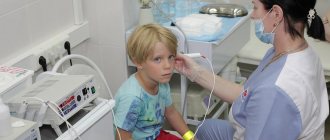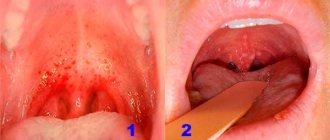Pulmonary tuberculosis is a highly contagious infectious disease characterized by the formation of specific foci of inflammation in the affected tissues and a pronounced reaction of the body. Recently, in most economically developed countries, the incidence of pulmonary tuberculosis and mortality from it have decreased. But despite this, tuberculosis remains a widespread disease, affecting mostly adolescents, young children, adult women and older people of both sexes, and to a lesser extent adult men.
- 2 Symptoms of pulmonary tuberculosis
- 3 Diagnosis of pulmonary tuberculosis
What it is
Destructive tuberculosis is a clinical group that includes several subtypes of the disease, which are accompanied by the destruction of lung tissue and the formation of cavities - cavities.
The following destructive forms of tuberculosis are distinguished:
- Focal.
- Infiltrative.
- Caseous pneumonia.
- Tuberculoma.
- Cavernous.
- Cirrhotic.
These options are united by one thing - the decay phase in the lung tissue. With them, a cavity is formed most often. A destructive focus almost never forms against the background of primary tuberculosis. In 100% of cases, cavities are formed due to cavernous and fibrous-cavernous tuberculosis.
Destructive pulmonary tuberculosis develops according to the following mechanism:
- Against the background of secondary consumption, caseous masses form. They dissolve and are resorbed under the influence of immune cells.
- Together with the caseous masses, the lung tissue or bronchus is destroyed. The masses are expectorated along with sputum.
- Foci of destruction form in the lung tissue, which consist of two layers - granulation tissue and pus.
- Pus and granulation are replaced by fibrosis, a wall of connective tissue is formed, inside which there is a cavity.
Perifocal inflammation occurs around the destructive focus. It consists mainly of lymphocytes. With antimicrobial therapy, these areas resolve. They are replaced by fibrous tissue, which appear as strands of collagen.
Destructive lesions can progress. In this case, areas of dead tissue form around the cavity.
However, each destructive form of tuberculosis has specific developmental nuances. Let's look at the example of the cirrhotic form. A rough zone of cirrhosis (sclerosis) forms in the lungs, which deforms the organ. lesions usually develop bilaterally, affecting segments of the lungs. The organ itself decreases in size and becomes deformed. The pleura is affected: it thickens and can cover the entire lung. The pleura may ossify. Due to damage to the respiratory organs, oxygen saturation in the blood decreases. The pathological process involves the bronchial tree, the individual branches of which expand. Inflammation develops in them. As a result of the pathological process, the lung undergoes cirrhosis.
Classification of cavities according to the structure of the walls:
- easily collapsing elastic with developed fibrous tissue;
- strong with dense walls of connective tissue.
By size:
- small – up to 2 cm in diameter;
- medium – 2-4 cm;
- large – 4-6 cm;
- huge - 6 or more cm in diameter.
Symptoms of pathology
Medical practice shows that a feature of the destructive form of the disease is its one-sided localization.
Most often, the pathology begins to develop approximately 3-4 months after the start of ineffective drug therapy for other forms of tuberculosis. The clinical picture reaches particular brightness precisely during the period of decay and the appearance of a strong cough with sputum is noted. In addition, during listening, moist rales are detected, the location of which becomes the decay cavity. After the process of cavity formation ends, the signs of the disease noticeably decrease and become less pronounced. SENSATION! Follow the link:
Tuberculosis of the urinary tract
During this phase, this form of tuberculosis is characterized by the appearance of the following symptoms:
- constant feeling of weakness and fatigue;
- loss of appetite or its complete absence;
- severe weight loss of the patient;
- development of asthenia;
- periodic low-grade fever.
In fact, patients with cavernous tuberculosis are considered a source of infection and a spreader of mycobacteria. If such a disease becomes latent, this may be indicated by bleeding from the lungs, which can occur without any reason in an apparently healthy person.
When the destructive form of the disease transitions to a complicated one, a breakthrough of the cavity into the pleural cavity is possible, and the development of the following pathologies:
- pleural empyema;
- bronchopleural fistula.
Depending on the size of the cavity, experts distinguish cavities of small, medium and large sizes. Typically, the course of the cavernous form of tuberculosis is about two years, after which healing of the caverns occurs. Most often, this process occurs in the form of tissue scarring, the formation of tuberculoma and a tuberculosis focus.
Symptoms and diagnosis
Decay or destruction syndrome is based on two syndromes: clinical and radiological.
The clinical syndrome consists of symptoms:
- cough with copious sputum production;
- intoxication with an increase in temperature to low-grade fever or fibrility.
- headache.
The clinical syndrome may be complicated by pulmonary hemorrhage. It usually starts slowly, but can develop suddenly. Bleeding is preceded by a salty taste in the mouth and discomfort in the chest with a feeling of warmth.
After bleeding begins, blood clots in the form of foam are found in the sputum. With active bleeding, blood may come out of the nose. Externally, the acute condition is accompanied by pale skin, a drop in blood pressure and impaired consciousness.
The main diagnostic method is chest x-ray. Destructive foci have reliable and indirect signs, including:
- small areas of darkening, ring-shaped with clear contours;
- in places of clearing there is no pulmonary pattern;
- there are gaps in the bronchus;
- presence of liquid.
The second method is bacterioscopy. Usually the result is positive - massive bacterial discharge. Such patients pose the greatest epidemic danger, as they carry bacteria in their sputum.
Auxiliary methods are important if previous methods turned out to be uninformative: MRI, CT.
Extrapulmonary destructive tuberculosis is diagnosed by other methods. For example, the organs of the genitourinary system and their lesions are examined using ultrasound diagnostics.
The cavity may close. This phenomenon is called extinction. Closure must be confirmed by computed tomography, radiography, or magnetic resonance imaging.
Causes of pulmonary tuberculosis
The causative agent of pulmonary tuberculosis is a group of bacteria Mycobacterium tuberculosis complex.
Most often, the disease is caused by Koch's bacilli, which are part of this group. Tuberculosis bacteria are considered one of the most resistant to environmental influences; they can exist for a long time outside the human or animal body, but despite this, they die quite quickly under the influence of ultraviolet irradiation and direct sunlight. The key source of infection with pulmonary tuberculosis and the main reservoir of infection are previously ill people. In this case, most often, infection occurs during contact with persons suffering from the open form of this disease, that is, with those who secrete tuberculosis bacteria in their sputum. As a rule, in this case, infection occurs through the respiratory route, that is, healthy people become carriers of the infection by inhaling air with scattered microorganisms. Persons with open form of pulmonary tuberculosis can infect more than ten people during the year. In turn, infection from carriers of closed forms of the disease with scant release of bacteria is possible only with constant, prolonged and close contacts.
Sometimes infection with pulmonary tuberculosis occurs through contact (through skin lesions) and nutritional routes (through the digestive tract). In this case, the sources of the disease can be not only people, but also sick animals, for example, poultry or cattle. Infection from animals is usually transmitted through eggs, milk, or when excrement from livestock and birds gets into drinking water.
According to WHO, today about a third of the population of our planet is infected with pulmonary tuberculosis, but the disease itself begins to develop only in the presence of a number of conditions conducive to it. Most often these conditions are:
- decreased immunity;
- unfavorable living conditions;
- constant stress;
- aging of the body;
- prolonged smoking (especially in cases where a person smokes more than 20 cigarettes per day);
- excessive passion for alcoholic beverages;
- diabetes;
- HIV infections.
Treatment
The destructive form of infection is treated exclusively in a hospital. After determining the sensitivity of bacteria to antibiotics, a chemotherapy regimen is prescribed, taking into account that such patients are at risk of multidrug resistance. Surgical removal of cavities and bronchoblocking are also used (a new method, closing the decay cavity with a valve).
In case of sensitivity to the main group of antibiotics, 1 regimen is prescribed - therapy lasting at least 5 months. In case of resistance to certain antibiotics, other regimens are chosen, implying longer chemotherapy with the main drugs, reserve second- and third-line antibiotics. Thus, therapy for the cavernous form lasts 1.5-3 years.
To maintain the body, special nutrition, antioxidants, vitamin B6, and hepatoprotectors are prescribed. Often the process recurs, requiring repeated hospitalizations. Some patients do not recover.
Prevention
Koch bacillus disease is growing from year to year. To prevent the spread of infection, special events are being held for the population. Prevention of tuberculosis:
- Improving social and living conditions,
- Improving working conditions,
- Cleaning the environment
- Switch to a healthy diet. You need to consume more proteins, vitamins and minerals. All these components are found in meat, fish, fruits, berries and vegetables,
- Complete cessation of bad habits: alcoholic drinks, cigarettes, drugs,
- Compliance with the regime. Maintaining a healthy lifestyle, which includes exercise,
- Sanatorium and recreational holidays,
- Strengthening the immune system.
List of visualization research methods
to diagnose tuberculosis :
- fluorography;
- radiography;
- computed tomography (CT).
Tuberculosis is a disease that is often not accompanied by clinical symptoms at its onset. For this reason, pathological changes are often an incidental finding during chest radiography. Every doctor and x-ray technician should know what the lungs look like with tuberculosis on an x-ray so as not to miss this dangerous disease.
Photo examples
For comparison, you can see x-rays of the chest before and after the disease:
Normal chest and lung x-ray. The lung fields are clean, the roots of the lungs are without any features.
Focal tuberculosis at the initial stage. A small focal change in the left lung, 1-1.5 cm in diameter, with an uneven and unclear contour, the structure is heterogeneous.
Residual calcifications after tuberculosis (52 years ago). Multiple rounded shadows in the right lung, strong intensity with a clear edge, homogeneous.
People with pulmonary tuberculosis may have a varied X-ray picture, which is associated with the variety of forms of the disease and stages of its course.
Medical factors
The presence of certain diseases that reduce the body’s resistance to tuberculosis, the level of care provided to the population, coverage of preventive measures, the development of diagnostic technologies and treatment methods - all this is included in the structure of factors of medical importance. Such risk factors for the development of tuberculosis are represented by the following conditions:
- Primary and secondary immunodeficiencies.
- HIV infection.
- Oncological pathology.
- Blood diseases (leukemia, lymphoma).
- Endocrinopathies (diabetes mellitus, hypothyroidism).
- Respiratory diseases (chronic bronchitis, pneumoconiosis).
- Stomach ulcer.
- Pathology of the urinary system.
- Exhaustion due to insufficient nutrition.
People with bad habits (alcoholics, drug addicts, smokers) and exposed to occupational hazards (dust, chemical aerosols) are also at risk. The contingent of people is expanding to include pregnant women, children under 3 years of age, adolescents during puberty, and the elderly.
A separate risk group consists of patients discharged from tuberculosis dispensaries with clinical recovery or residual changes in the lungs. Persons who have previously had an infection have a high risk of re-infection due to the characteristics of the disease (the likelihood of endogenous reactivation of mycobacteria). The risk of relapse is significantly higher in cases where chemotherapy was incomplete or there was no maintenance treatment. Moreover, even the developed specific immunity does not protect against re-infection.
The spread of infection in the population and people's susceptibility to the disease largely depend on unfavorable medical and social factors.
The likelihood of infection and an unfavorable course of tuberculosis increases in the presence of certain risk factors, which can be divided into epidemiological, social and medical. It is to them that all efforts to prevent infection should be directed, because the epidemic can be overcome only with a comprehensive correction that affects all parts of the process: environmental conditions, the source of transmission and the susceptible organism.
In children
The susceptibility to the disease in childhood is explained by the presence of certain risk factors. They can simultaneously affect the body of a child with a weak immune system. Most often this is:
- Medical and biological (infection, poor-quality vaccine against tuberculosis or its incorrect administration, presence of concomitant diseases),
- Epidemiological (direct contact with a carrier of an open form of the disease),
- Social (subtypes of groups: geographical, environmental, age and gender). All this happens due to unfavorable social and living conditions.











